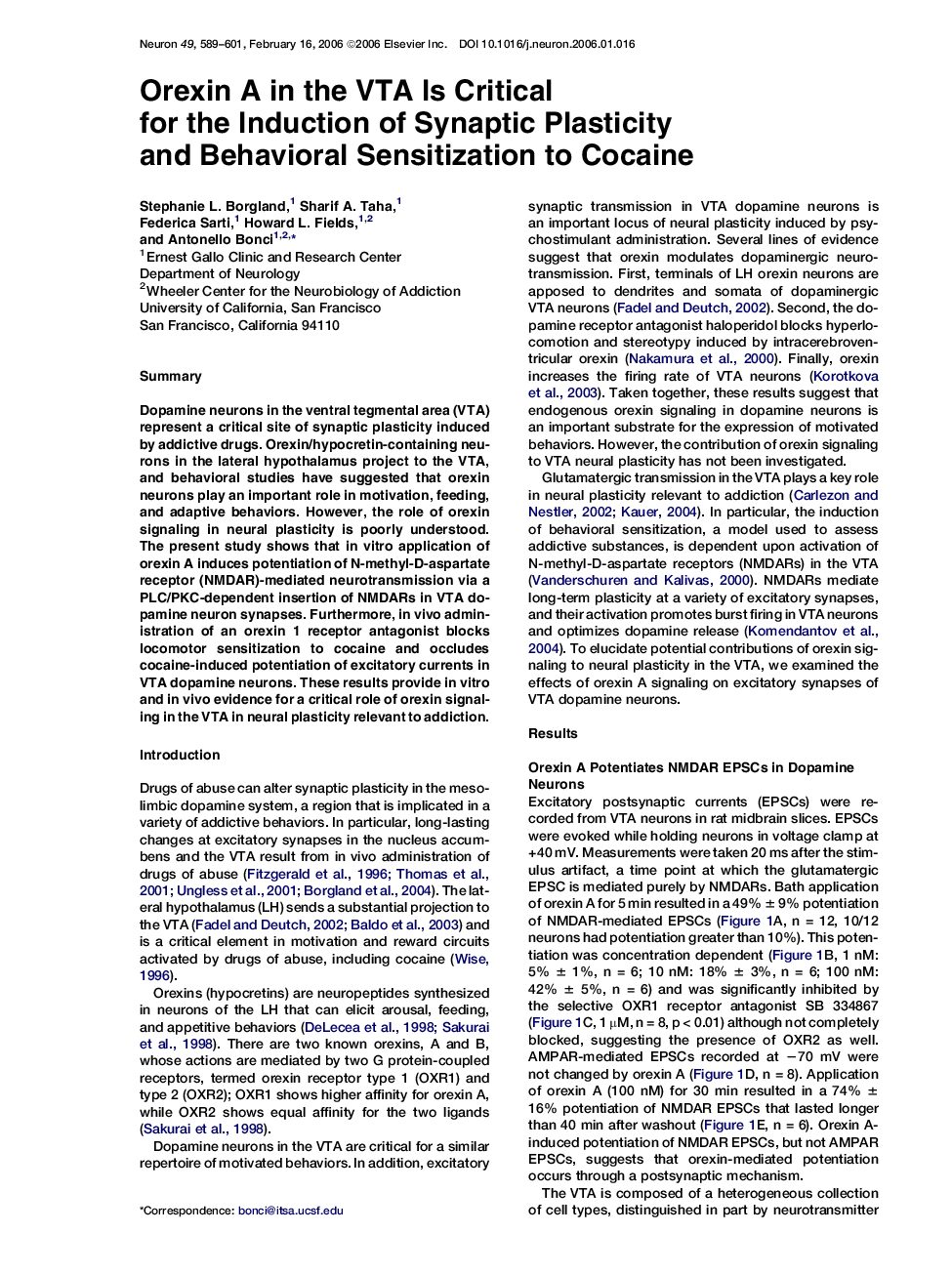| Article ID | Journal | Published Year | Pages | File Type |
|---|---|---|---|---|
| 4323354 | Neuron | 2006 | 13 Pages |
SummaryDopamine neurons in the ventral tegmental area (VTA) represent a critical site of synaptic plasticity induced by addictive drugs. Orexin/hypocretin-containing neurons in the lateral hypothalamus project to the VTA, and behavioral studies have suggested that orexin neurons play an important role in motivation, feeding, and adaptive behaviors. However, the role of orexin signaling in neural plasticity is poorly understood. The present study shows that in vitro application of orexin A induces potentiation of N-methyl-D-aspartate receptor (NMDAR)-mediated neurotransmission via a PLC/PKC-dependent insertion of NMDARs in VTA dopamine neuron synapses. Furthermore, in vivo administration of an orexin 1 receptor antagonist blocks locomotor sensitization to cocaine and occludes cocaine-induced potentiation of excitatory currents in VTA dopamine neurons. These results provide in vitro and in vivo evidence for a critical role of orexin signaling in the VTA in neural plasticity relevant to addiction.
